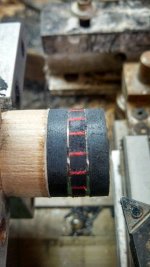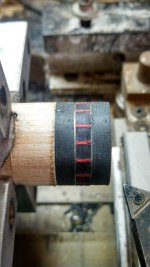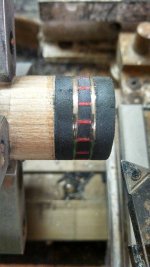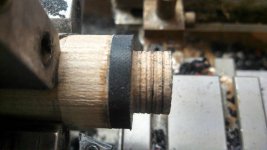So I made my first billets and after the first try cutting the slots I got it right. So I got them all cut up and installed with solid black phenolic and a metal ring on either side of the billet. As I was cutting them down to size with a carbide tool and then the dilemma came. The cutter did not cut the metal rings clean and pushed them to the point it moved and ruined the billet and other rings beyond saving. So I'm glad I made my slots a little long. Last night I started the process over with the intensions of trimming them this time with my router. I figure that will put less pressure on the metal rings and cut them better. Pictures are of the rings before I cut them off last night. As you can see I grooved the tennon to hold the epoxy.
Sent from my XT901 using Tapatalk 2
Sent from my XT901 using Tapatalk 2




